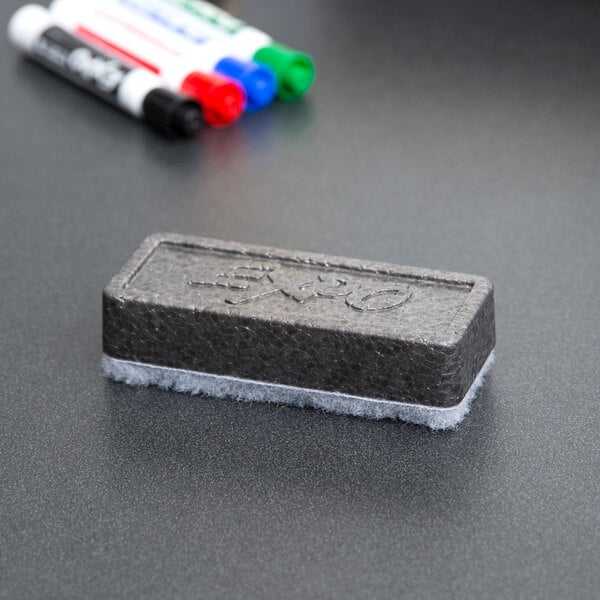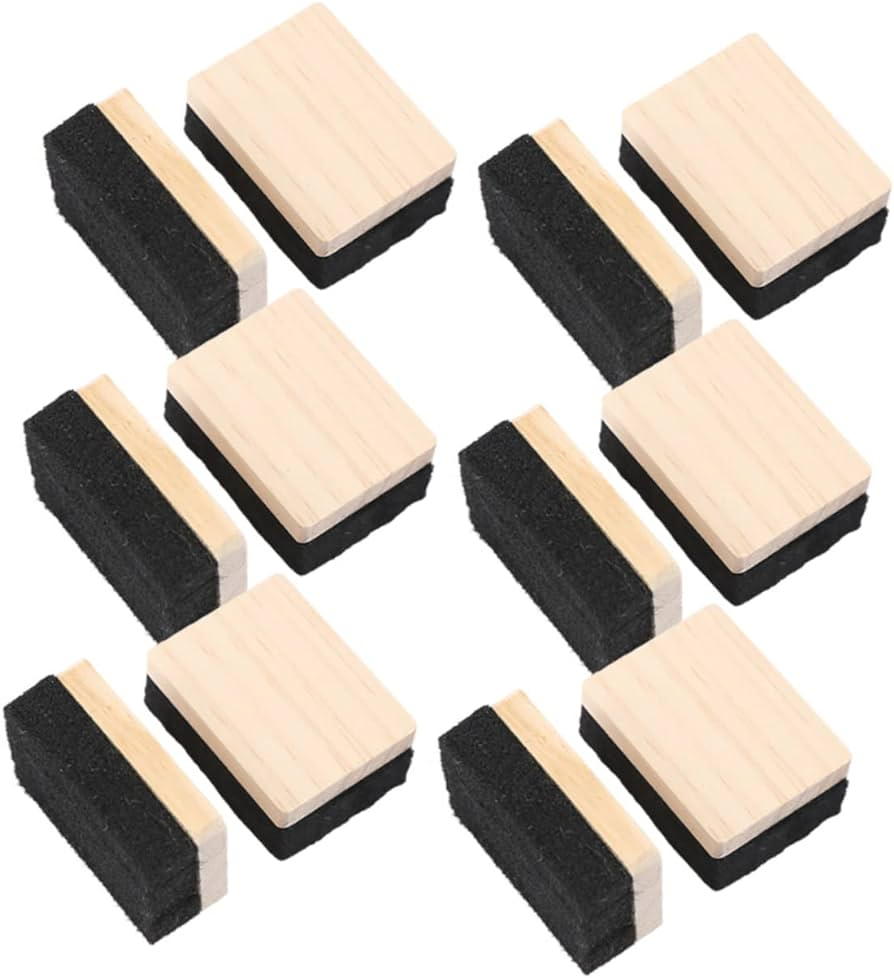In the realm of classroom essentials, one humble tool stands out for its simplicity yet indispensable role in education: the chalkboard eraser. Often overlooked amidst the array of high-tech gadgets and educational aids, the chalkboard eraser plays a crucial role in facilitating learning and expression in classrooms around the world. In this comprehensive exploration, we delve deep into the world of chalkboard erasers, uncovering their history, design, functionality, and impact on education.
Evolution through Time: Tracing the History of Chalkboard Erasers
The journey of the chalkboard eraser dates back centuries, evolving alongside the development of chalkboards themselves. Initially, simple cloth or felt pads served as rudimentary erasers, allowing teachers to wipe away chalk markings and prepare the board for new lessons. Over time, as chalkboards became more prevalent in classrooms, the design of erasers underwent refinement, with manufacturers experimenting with different materials and configurations to enhance performance and durability.
Anatomy of a Chalkboard Eraser: Understanding Design and Construction
While seemingly straightforward in design, chalkboard erasers exhibit a surprising level of complexity when examined closely. Typically, a chalkboard eraser consists of several key components:
- Outer Casing: The outer casing of the eraser serves as its shell, providing structure and protection to the inner components. It is often made of durable materials such as wood, plastic, or metal, designed to withstand frequent use and handling.
- Erasing Material: At the core of the eraser lies the erasing material itself, which is responsible for removing chalk markings from the board. Common materials include felt, foam, or microfiber, each offering unique erasing properties such as absorbency and abrasiveness.
- Handle or Grip: Many erasers feature a handle or grip for ease of use, allowing teachers to firmly grasp the eraser and exert pressure as needed when erasing. This ergonomic design element enhances comfort and control during prolonged use.
The Science of Erasure: Exploring Erasing Techniques and Efficiency
Erasing chalk markings may seem like a simple task, but there is an art to achieving optimal results efficiently. Educators employ various techniques to ensure thorough erasure while minimizing residue and dust. Some key strategies include:
- Even Pressure Distribution: Applying consistent pressure across the surface of the eraser helps to achieve uniform erasure without streaks or smudges. Teachers often use sweeping motions or circular motions to cover the entire area evenly.
- Multiple Passes: For stubborn or heavily saturated markings, multiple passes may be necessary to achieve complete removal. By erasing in layers, educators can gradually lift away chalk residue without damaging the board surface.
- Cleaning and Maintenance: Regular cleaning and maintenance of chalkboard erasers are essential to preserve their effectiveness and prolong their lifespan. This may involve tapping or shaking out excess chalk dust, washing the eraser with soap and water, or replacing worn-out erasing material.
Beyond the Basics: Innovative Advances in Chalkboard Eraser Technology
While the fundamental function of chalkboard erasers remains unchanged, modern advancements have introduced innovative features and materials to enhance performance and user experience. Some notable developments include:
- Magnetic Erasers: Magnetic chalkboard erasers feature built-in magnets that allow them to adhere to magnetic chalkboards when not in use, preventing loss or displacement. This convenient feature ensures that the eraser is always within reach when needed.
- Eco-Friendly Materials: In response to growing environmental concerns, manufacturers are exploring eco-friendly alternatives to traditional erasing materials. Biodegradable foams, recycled fabrics, and sustainably sourced wood are among the eco-conscious options gaining traction in the market.
- Antimicrobial Properties: With hygiene and sanitation in the spotlight, some chalkboard erasers are now infused with antimicrobial agents to inhibit the growth of bacteria and fungi. This helps to maintain a clean and sanitary learning environment, particularly in shared classroom settings.
Impact on Education: The Role of Chalkboard Erasers in Learning Environments
While often overshadowed by digital technologies, chalkboard erasers continue to play a vital role in modern classrooms, fostering interaction, creativity, and critical thinking. Here are some ways in which chalkboard erasers contribute to the educational experience:
- Hands-On Learning: Chalkboard erasers facilitate hands-on learning by encouraging students to actively participate in problem-solving, brainstorming, and idea sharing. The tactile experience of erasing and rewriting encourages engagement and retention of information.
- Visual Representation: Chalkboard drawings and diagrams created with the aid of erasers serve as visual aids to complement verbal instruction. By visually representing concepts and processes, educators enhance comprehension and reinforce learning objectives.
- Collaborative Learning: Shared chalkboard spaces promote collaborative learning environments where students can collaborate, communicate, and critique each other’s ideas. The act of erasing and revising fosters a spirit of experimentation and exploration, leading to deeper understanding and insight.
Looking Ahead: The Future of Chalkboard Erasers in Education
As we look ahead to the future of education, the role of chalkboard erasers is likely to continue evolving alongside advancements in technology and pedagogy. Here are some potential developments and trends that could shape the future of chalkboard erasers in education:
Integration with Digital Platforms
- Hybrid Learning Environments: With the increasing adoption of digital tools and online learning platforms, chalkboard erasers may evolve to integrate with digital platforms seamlessly. This could involve erasers equipped with sensors or connectivity features that allow them to interact with digital chalkboards or virtual learning environments.
Enhanced Ergonomics and Design
- Ergonomic Designs: Future chalkboard erasers may feature enhanced ergonomic designs to improve comfort and usability for teachers. This could include adjustable grips, lightweight materials, and innovative shapes that reduce strain during prolonged use.
Sustainable Materials and Practices
- Eco-Friendly Solutions: As sustainability becomes a top priority in education, manufacturers may prioritize the use of eco-friendly materials and production practices for chalkboard erasers. This could involve the development of erasers made from biodegradable or recycled materials, as well as initiatives to reduce waste and carbon emissions throughout the manufacturing process.
Smart and Connected Features
- Smart Erasers: Chalkboard erasers equipped with smart features such as built-in sensors or connectivity capabilities could enable new functionalities. For example, smart erasers could automatically track usage metrics, provide real-time feedback on erasing techniques, or even offer personalized teaching recommendations based on eraser usage data.
Continued Importance of Analog Tools
- Balancing Analog and Digital: Despite the proliferation of digital technologies, the tactile experience of using chalkboard erasers remains valuable for many educators and learners. In the future, chalkboard erasers may continue to play a crucial role in balancing analog and digital teaching methods, providing opportunities for hands-on learning, collaboration, and creative expression.
Conclusion
While the future of education may be increasingly digital and interconnected, the humble chalkboard eraser is likely to remain a staple tool in classrooms for years to come. By embracing innovation, sustainability, and the evolving needs of educators and learners, chalkboard erasers can continue to adapt and thrive in the ever-changing landscape of education. Whether used in traditional chalkboard settings or integrated with cutting-edge digital technologies, chalkboard erasers will continue to facilitate learning, creativity, and collaboration in classrooms around the world.





